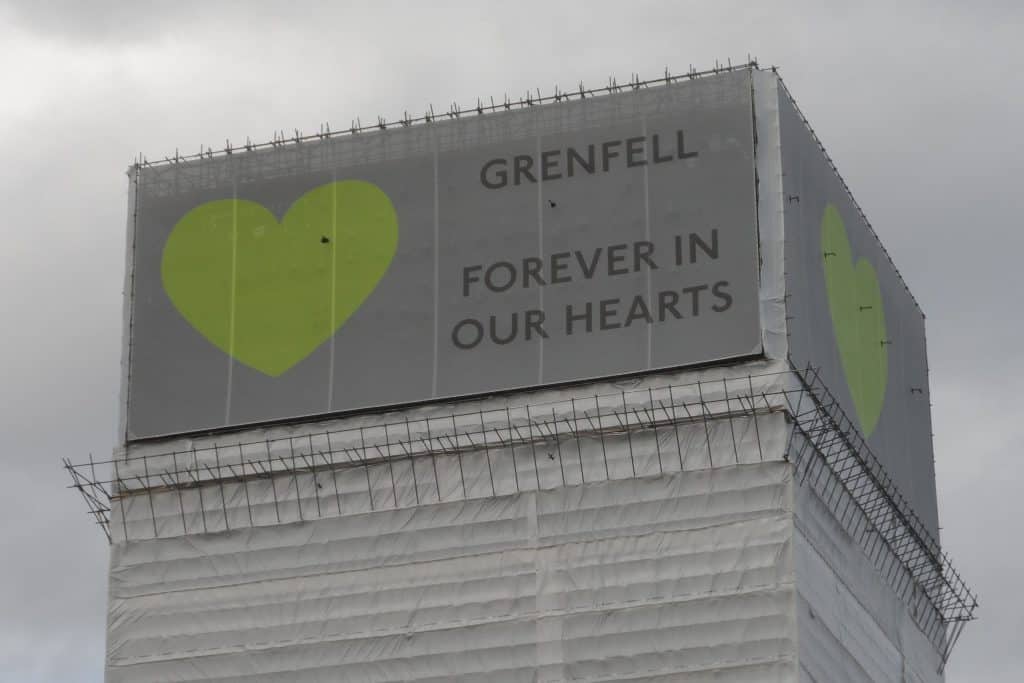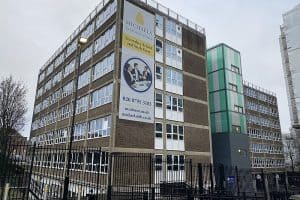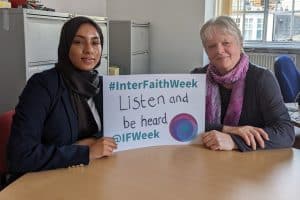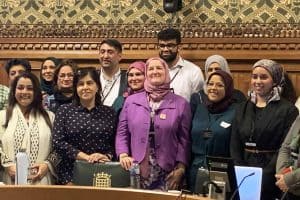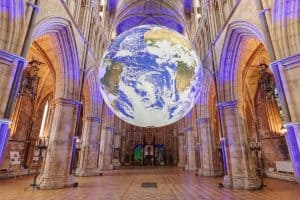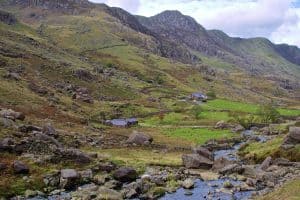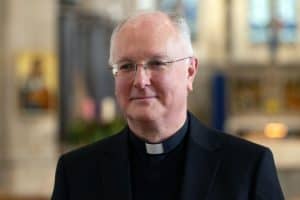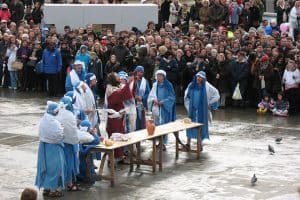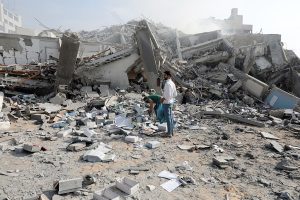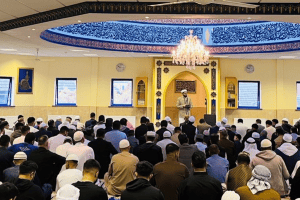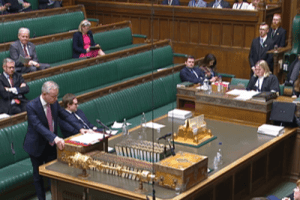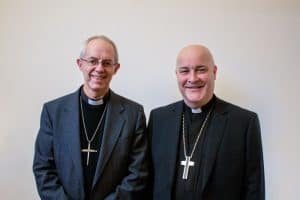By Tim Wyatt, 12 June 2020
Sunday will mark the third anniversary of the Grenfell Tower fire. The coronavirus pandemic and lockdown have forced the cancellation of many of the planned commemorations.
In the place of the organised services and vigils, churches across London and further afield will instead ring their bells 72 times — once for each person who died in the disaster —and symbolising the role communities of faith have played in the Grenfell story.
On the night of 14 June 2017, places of worship were first to respond to meet the needs of those staggering out of the blazing tower block in west London and the emergency services battling to help them.
The local Anglican church, St Clement’s, opened its doors at 3am, and other churches, mosques, synagogues and gurdwaras quickly pitched in in the days that followed. They co-ordinated and distributed donations, quickly secured temporary accommodation, compiled lists of the missing, offered counselling and even fed as many as 6,000 people in the first three days alone, according to a detailed report by the religion think tank Theos.
In total, 15 different centres — places of worship, faith-based charities, and community groups associated with a religion — played some part in the aftermath of the fire.
But long after the emergency needs of the survivors and bereaved had been met and the news cameras had moved on, faith communities have continued to act as trusted local hubs, advocating for the community, hosting spaces for discussion, and co-ordinating memorials.
The Minister of State for building safety, faith and communities, Lord Greenhalgh, paid tribute to them: “In the three years since the Grenfell tragedy, local faith communities have worked tirelessly to bring spiritual and practical support to the bereaved and the survivors whose lives were devastated by the fire.
“On that terrible night and in the days and weeks afterwards, they were among the first to offer shelter, food, and comfort to the grief-stricken and homeless. And they have not wavered since, continuing to work together to speak up for, and to bring solace to, a community which has faced innumerable challenges. They have shown us a powerful example of what it means to care. I know I am not alone in being humbled and inspired by their strength and compassion.
As building safety Minister, my mission is to ensure that a tragedy like this never happens again.”
The Bishop of Kensington the Rt Rev Graham Tomlin said faith communities had been offering community resources and spaces that the secular authorities could not.
“Churches and religious buildings were able to offer a place where people could reflect, respond, pray if they pray. St Clement’s did a silent vigil every year on the anniversary so people could come in and be present and light a candle, say a prayer and be quiet, which you can’t really do in public buildings.”
The Rev Alan Everett, who was until recently the Anglican parish priest, said his church had acted as a focal point for people to express themselves and to find sanctuary. The railings around the church were soon covered with memorials, and often those who had come to that part of North Kensington would sit and reflect inside the church building.
For the first anniversary, he said his congregation helped to lead the traumatised community through a quasi-liturgical week of reflection and grief. The railings were taken down to erase symbolically any barrier between the church and the neighbourhood, and in their place a memorial garden was created with a dedication stone and mosaic.
The week also included a 24-hour vigil on 13 June, with the church itself packed out by 1.30am on the next day, the moment the fire started a year earlier. “The church was in total silence, you could have heard a pin drop as we read out the 72 names. It was the most extraordinary thing I’ve ever experienced,” he said.
But alongside helping the community grieve and remember, faith groups have acted as advocates for the survivors and campaigners. Mr Everett said he and other faith leaders had tried to engage with the media to correct misconceptions and “present the human face” of the situation, to ensure the mostly immigrant background residents of the tower were not stigmatised.
Bishop Graham Tomlin agreed, explaining how he had organised the bellringing, first across London and now the whole country, because he felt it was vital faith groups took the lead in reminding the nation of the tragedy and its unresolved questions. “There is something significant pastorally: solidarity with people who affected by it,” he said.
“Grenfell also raised a whole series of issues for our wider society that we forget at our peril. It raises issues about housing, about local democracy, about the significance of faith communities and community groups, about fire safety and cladding on buildings.”
Although there were numerous churches and denominations involved in supporting the Grenfell survivors, Bishop Tomlin said there was something unique the Church of England could offer: the connection between the ultra-local and the national. He had helped organise meetings between residents and Theresa May, then prime minister, while also having a direct connection on the ground through Mr Everett.
“We stretch across the fabric of the UK in a way which makes it possible for us to act as convenors and mediators.” In a service on Sunday he planned to preach about how justice was not about retribution but putting things right and building a society that truly protects and safely houses the vulnerable.
“That vision of justice is one which the Christian church has to promote and speak of, which means speaking on behalf of those at the receiving end of injustice, but also trying to bring together them and others to seek resolution.”
Other religious groups also have plans to mark the anniversary. The Khalsa Jatha Gurdwara, a short walk from Grenfell Tower, sprang into action on the night of the fire and offered free food and counselling for weeks afterwards. But Gurpreet Singh Anand, who chairs the gurdwara’s trustees, said he and Sikh colleagues had recently increased their advocacy efforts too.
“There used to be questions about if faith was still relevant today, and Grenfell taught me it definitely is. It showed faith has its place but it also showed a weakness in local government.”
On Sunday the gurdwara will offer prayers for those who died and afterwards give 72 beats of their historic war drum outside on the street, one for each of the victims. Mr Singh Anand explained that each gurdwara had a drum, but this one was a particularly significant relic from the Sikh Empire of the 19th century which would be beaten by Sikh armies as they arrived on the battlefield.
“It was there to say, ‘Hey, we have arrived. You have been oppressing your people and here we are at the gates.’ Maybe we need to take it to the town hall or something!”
Alongside the Anglicans, the Theos report notes numerous other Christian denominations, as well as Muslims, Sikhs, Jews and others who have been involved in the long-term rebuilding after Grenfell.
The Al-Manaar Muslim cultural heritage centre nearby employed psychotherapists and counsellors to offer mental health provision for the hundreds of Muslims who lived in the tower block, some of whom may have felt uncomfortable accessing secular therapy. Another Islamic group started art therapy classes for traumatised children.
Other faith groups have arranged children’s holiday camps, with faith-appropriate activities, and hosted meetings of campaigners. The Theos report suggests it was because faith groups had a long-standing, permanent presence, were embedded in the community, and had built up trust with locals before the fire that meant they could pick up the pieces in a way the local authorities could not.
One local faith leader interviewed in the report summed up their role by explaining how he had repeatedly told his congregation: “When the journalists and emergency services go, we’ll still be here . . .”

